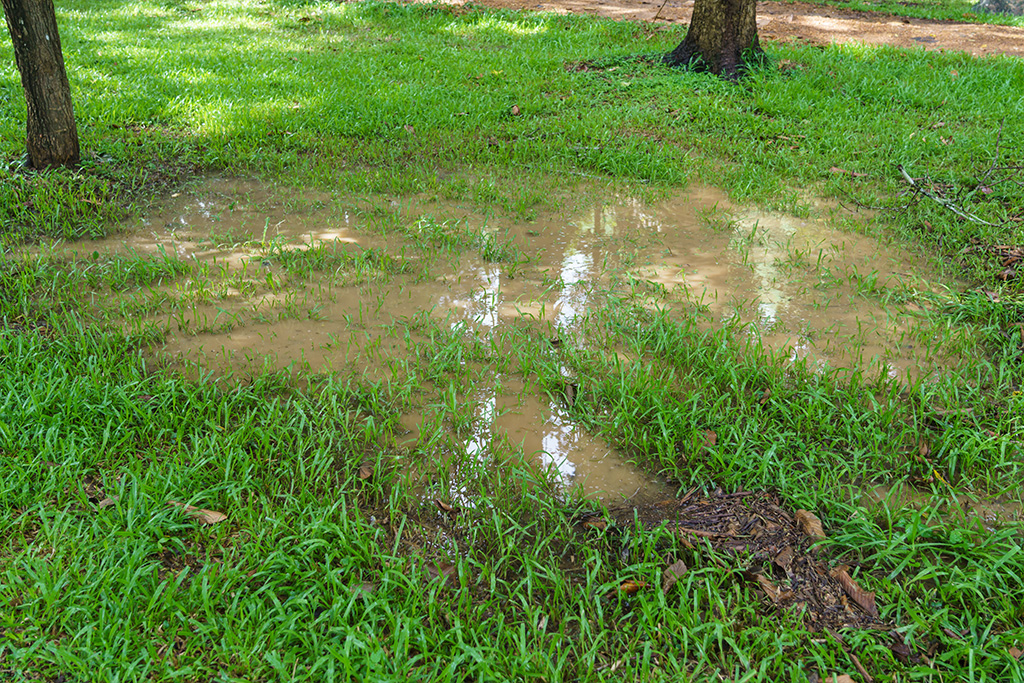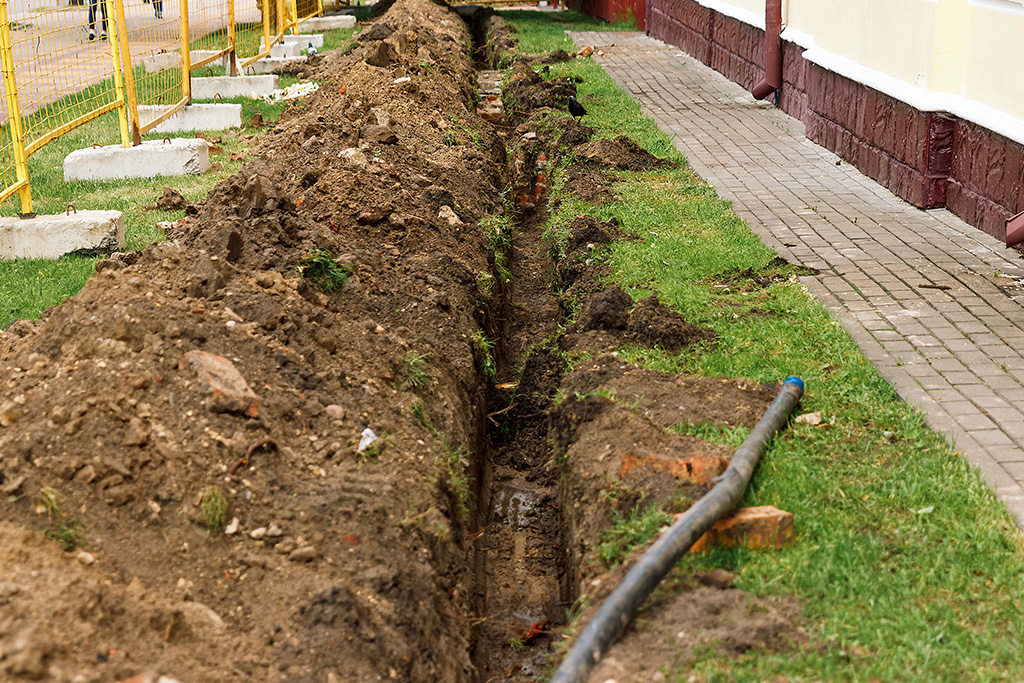Muddy-Yard Solutions
Are streams and puddles of brown water overtaking your green grass? Are you sloshing around in your shoes while walking across your lawn? Then it might be time to give your yard the assistance it needs to stay dry. These tips can help you stop wet weather from raining on your parade.
Why is my yard so muddy?

Before you start implementing a solution, it’s important to pinpoint the source of the muddiness. By doing so, you can choose an appropriate fix. Here are the most common causes.
Poor drainage
The number one reason for a soggy lawn is poor drainage. Standing-water spots indicate that water has nowhere to drain from your lawn. Pay attention to where most of the mud is, which can reveal where you need to make more drainage points with the help of a professional. Additionally, you should ensure that your drains and gutters are free of debris.
Uneven terrain
If you have pets or children that play in the yard, then you know that they create their own paths and dig holes. Look around your yard for obvious signs of digging, overuse, and natural soil erosion. If you have a swing set or a trampoline, it also might be time to move it so the ground can be restored.
Rising water levels
Living near a lake or creek can be tranquil, but it often comes with the additional risk of rising water levels. Find out if your municipality has done a study on the water levels and, if the levels are problematic, whether it is working on any solutions.
Compacted soil
When soil gets too compacted, it can become an issue. Check the topmost layer of your soil; if it is sticky and hard to penetrate, then that could be a large part of why your yard is muddy. To remedy this problem and properly drain away water, you may need to aerate the soil, as discussed in the next section.
DIY solutions

Most times, you can fix a slightly to moderately muddy yard yourself. Try one of the following ideas before you go over budget to upend your yard.
Plant a rain garden
Turn an area that tends to flood into a rain garden full of plants that thrive in excess moisture. For example, tall grasses like zebra grass can act as natural filters by soaking up water and preventing runoff, and deep-rooted plants like perennials soak up and store water to survive during dry periods. While a rain garden won’t completely prevent a muddy yard, it can conceal a muddy area with decorative plants, making it less likely you’ll step into it.
Extend gutter downspouts
A lot of homeowners are unsure about how long their downspouts should be. The answer can be tricky because it depends on your landscaping, elevation, and other property factors. However, pools of water and mud near your downspouts undoubtedly mean it’s time to extend these pipes.
Head to a local home improvement store, and talk to an associate about your options. Popular budget-friendly extensions, such as aluminum downspouts, plastic splash blocks, and plastic tubing, connect straight to your existing gutter drain to give it extra length. It’s also a good idea to add rocks near where the water will exit to slow and disperse the runoff.
Aerate your lawn
Adding small pockets of air to your lawn, or aeration, can help prevent your yard from becoming waterlogged. Head to a home improvement store, and ask about renting a gas-powered core aerator to speed up the process. Be sure to time your aeration during the grass’s peak time of natural growth so you don’t stress seeds or budding grass.
Professional help

A yard that’s completely covered in mud and puddles may require professional help. A landscaping expert can assess the problem and provide the right course of action rather than you conducting a trial by error, which can potentially save you time and money. Here are a few common solutions to discuss with a contractor.
Create a dry creek bed
Digging a gently sloping creek bed, lining it with landscaping fabric, and filling it with rocks is one of the most effective solutions for a flat yard that needs a runoff point to prevent erosion. In this setup, water typically soaks into the soil over time and doesn’t overflow, so long as the creek bed is dug deep enough, which a landscaper can calculate. As a bonus, it’s also decorative, creating a natural-looking water feature that can boost your curb appeal.
Install a French drain
A French drain is a perforated drainpipe, typically made of plastic, that runs underneath your lawn to channel water away without disrupting your yard space. To successfully install one, a landscaper needs to identify where the water pools and then dig a trench lined with gravel to lay the pipe away from your home. You’ll also need to consider your neighbors and your municipality’s codes for digging. While it may cost more than any other solution listed here, a French drain is virtually guaranteed to fix your watery lawn.
Don’t get stuck in a muddy situation—try one of these solutions to keep your lawn puddle-free.



